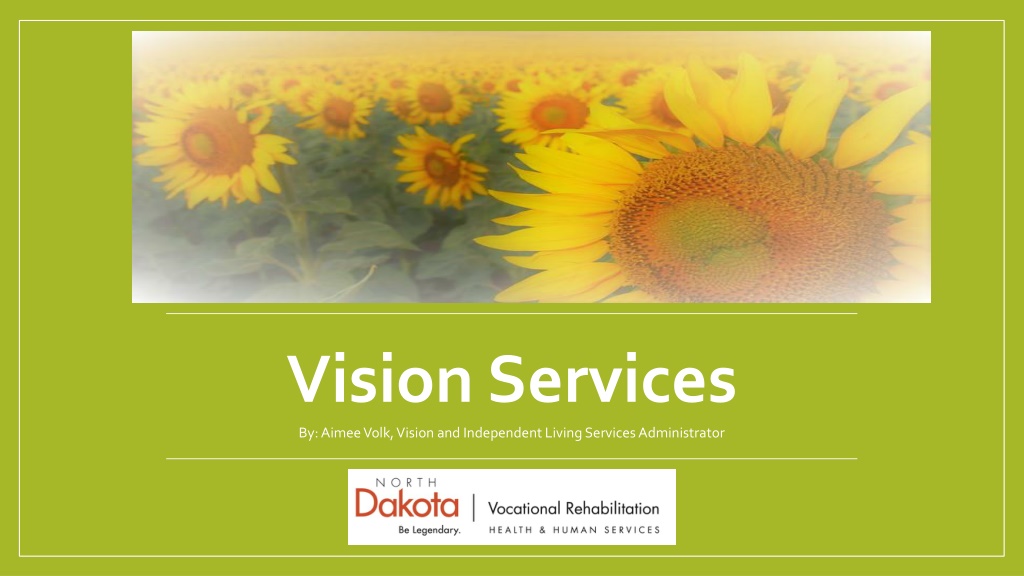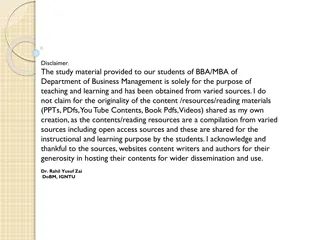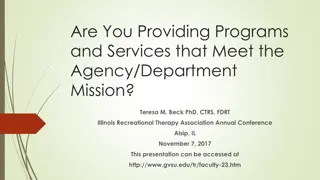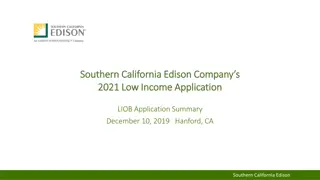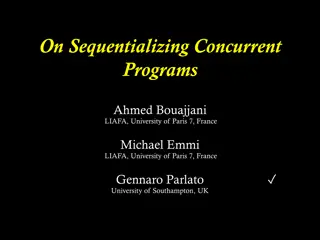Low Vision Programs and Services
Explore the world of low vision, its impact on individuals, common diagnoses, and available programs for assistance. Discover how individuals with low vision can maintain independence and enhance their quality of life through vocational rehabilitation programs.
Download Presentation

Please find below an Image/Link to download the presentation.
The content on the website is provided AS IS for your information and personal use only. It may not be sold, licensed, or shared on other websites without obtaining consent from the author.If you encounter any issues during the download, it is possible that the publisher has removed the file from their server.
You are allowed to download the files provided on this website for personal or commercial use, subject to the condition that they are used lawfully. All files are the property of their respective owners.
The content on the website is provided AS IS for your information and personal use only. It may not be sold, licensed, or shared on other websites without obtaining consent from the author.
E N D
Presentation Transcript
Vision Services By: Aimee Volk, Vision and Independent Living Services Administrator
Learning Objectives Understanding low vision Common low vision diagnoses Understanding low vision programs with VR Common assistive devices for low vision to maintain independence How to complete a referral and whom to contact
What is Low Vision? Cannot be fixed with glasses, contact lenses, medication, or surgery Can occur at any age but tends to affect older adults due to aging of the eyes. Best corrected visual acuity 20/40 is low vision and legal blindness is 20/200 in the better eye Most common causes of Low Vision in aging adults Macular Degeneration Cataracts Glaucoma Diabetic Retinopathy Brain injuries (Traumatic Brain Injuries falls, strokes, car accidents, etc.) Low vision is permanent There are things we can assist with to help vision and to remain safe and independent.
What can Individuals Experience with Low Vision? Loss of vision impacts are substantial from depression, permanent disability, loss of productivity, and diminished quality of life. Typically the common struggles for those with low vision are doing daily tasks: Reading Bill pay Medication management Cooking Shopping Driving Activities of daily living Cleaning
Low Vision Programs Through Vocational Rehabilitation we have 3 programs that can assist those with vision deficits VR Program if someone wants to work Older Individuals who are Blind (OIB) Program Senior Community Service Employment Program (SCSEP) VR is designed to help people with disabilities meet their career goals, from entry-level to professional. It helps people with disabilities get jobs, whether the person is born with a disability, develops a disability or becomes a person with a disability while working.
Older Individuals who are Blind(OIB) Program Eligibility for OIB program Age 55+ Have a vision impairment that causes low vision Not living in a nursing home Not working (if working referred to VR program Goal: Improve the individual's independence in their homes and communities and enhancing their quality of life.
Link to video KFYR Low Vision AT in the Kitchen Services Comprehensive in home evaluation to determine what will help the client Counseling/education (of vision diagnosis) Advocacy Training Daily Living Skills Meal preparation Labeling/marking/organizing Clothing care Leisure activities Personal care/grooming Home maintenance and cleaning Assistive Technology Devices and Training Communication Skills Telling time Use of telephone Financial management Writing/transcribing Computer training Information and Referral
Common Assistive Devices for Low Vision Magnifiers Magnifying Lamp CCTV Bump Dots Electronic Video Magnifier Talking Watch Various Writing Guides Lighting
Referrals Visit Vocational Rehabilitation's Website You can contact OIB/VR at 1-800-755- 2745 and you will be directed the correct regional office.
Regional Contacts Aimee Volk, Vision & IL Admin. 701-328-8954 alvolk@nd.gov Vacant, Fargo 701-298-4460 Vacant Mariel Zeller, Minot 701-857-8640 mlzeller@nd.gov Jim Drew, Jamestown 701-253-6352 jdrew@nd.gov Cathy Bryce, Devils Lake 701-665-2221 cbryce@nd.gov Betsy Hermanson, Bismarck 701-328-8800 ehermanson@nd.gov Annika Stearns, Grand Forks 701-795-3149 astearns@nd.gov Rick Haugen, Dickinson & Williston 701-328-8954 richaugen@nd.gov
Thank You If you have questions please contact: Aimee Volk, Vision and Independent Living Services Administrator, VR (701) 328-8954 alvolk@nd.gov
